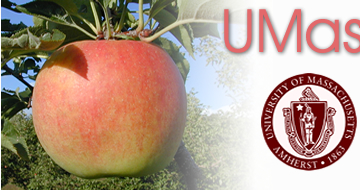

| FRUIT ADVISOR HOME | CONTACT | ABOUT | ||
 |
 |
|
| Consumer Evaluation of New, Antique, and Little Known Apple Varieties | ||
|
|
||
Initially, it seemed most unfortunate that Massachusetts growers would be excluded from purchasing trees of the newest and best apple varieties. However, only a very few varieties will possess the characteristics that will make them significant national varieties. Those that are not selected and may be available to growers have flaws, but if recognized, they may not be a serious detriment or even be a serious problem at all. The most notable flaw that many of these varieties have, regardless of season of harvest, is that the postharvest life may be too short to be considered a viable variety to be sold through normal marketing channels. Others may be cosmetically challenged, even though taste is excellent. Some may be small, but otherwise excellent. We suggest that this group of second-tier varieties may provide a unique opportunity for growers, especially those who sell primarily through roadside stands. We believe that customers who shop at roadside stands may be more quality conscious, are interested in purchasing something that is different and good, and are willing to pay a premium for apples that are available only at roadside stands. Proposed Strategy for Growers Who Want to Take Advantage of the Marketing Potential Offered by Planting New Varieties We suggest that growers select several new, different, or antique varieties and plant them. These should be planted on precocious and dwarfing rootstocks so that trees can come into production rapidly. We suggest that the number of trees planted and the total volume produced for each variety should be conservative for two reasons. First, this is the safest approach if customers do not like a particular variety. Second, a basic tenet of our proposal is that customers should have a variety of apples to choose from. As varieties are sold out, they should have other new and different varieties from which to choose. Production of any one variety may be as low as the 50 to 250 bushel range. Apples would be harvested at peak quality and sold over a 3 to 4 week period. Table 1 lists selected time slots and the rational for having new varieties in each one of these time slots. We suggest having two new varieties in each slot. | Table 1 | |
||
| ©Copyright 2008 University of Massachusetts Amherst. Site policies. Produced and maintained by the UMass Fruit Program. |